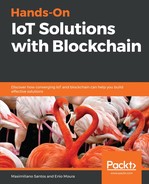Cloud computing is the concept of sharing computational resources, including memory, calculation, networking, and storage capabilities, to run applications. The characteristics that define a computing model as a cloud model include self-service resource allocation, software-defined resources, and pay-as-you-go monetization. These are usually presented in three models of commercialization: Infrastructure as a Service (IaaS), Platform as a Service (PaaS), and Software as a Service (SaaS). Furthermore, they can be delivered into public and private models of deployment:

Looking at the delivery models in the preceding diagram, it's possible to understand which capabilities the service consumer should care about:
- In the IaaS model, as the name says, the cloud service provider is responsible for maintaining networking, storage, servers, and virtual machine components. Every layer above that, including its licenses, backups, updates, and upgrades, are the responsibility of the party that contracted the service.
- PaaS provides three more layers: operating system, middleware, and runtime capabilities, giving the service consumer more abstraction on infrastructure and software license management; the only layers they have to deal with are the application code and binaries and data used by it.
- SaaS takes computing to a higher level of abstraction: all the service consumer has to do is to use the subscribed solution.
IBM Cloud Public (also known as Bluemix) provides all of the capabilities described here. IaaS, PaaS, and SaaS solutions are available through its console. You can instantiate physical or virtual machines and application runtimes, and subscribe to any of the services available through the service catalog, including the IBM Watson IoT and IBM Blockchain platforms.
When these models are deployed in a multi-tenant environment in a public network such as the internet, it's called a public cloud—a place where a person and a company share the same resources. When a company or a person uses any of these models in a single-tenant environment in a private or public network, it is called a private cloud.
